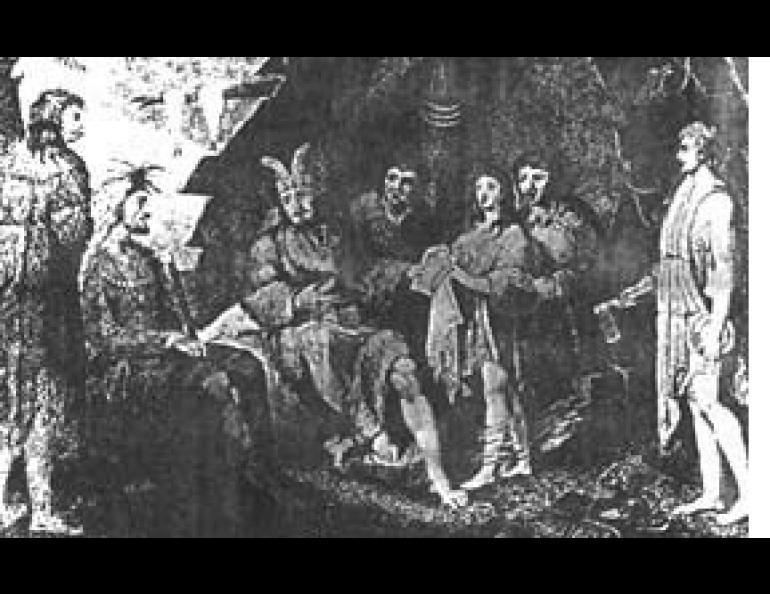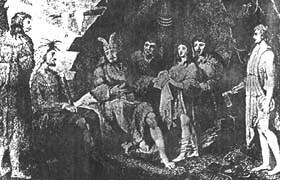
A Clash of Empires in Southeastern Alaska
As the American colonists used the slogan "Don't tread on me" to inform the British of their intentions, so the Tlingit Indians of southeast Alaska might have notified intruders of the 18th and 19th centuries. They were not to be taken lightly, as their massacre of a Russian garrison in Sitka Sound proved in June of 1802. True, the Russians had infuriated the Tlingit by seizing hostages, and there were even claims that British traders may have incited the Indians in order to eliminate Russian competition, but it was no simple tribe of primitives with whom the Czar's men had been dealing.
According to the State of Alaska series Alaska Regional Profiles, the Tlingit had come a long way to get to the southeast coast where they found themselves 2,000 years ago. To be specific, they had to come all the way from Interior Canada, migrating across the coastal mountain ranges through river valleys that had been largely glaciated until about 4,000 years before they arrived. In migrating, the Tlingit first had to adapt from being plains Indians to a people that depended primarily on a river-oriented environment. As they moved further west to the coast, their culture became one of beach dwellers; they had become a seagoing people by the time the white man arrived. By then, they were firmly entrenched on the coast all the way from the southeast tip of the Alaska panhandle to near Yakutat on the Gulf of Alaska, and were still expanding northward. At the time of the first Russian contact in 1741, it is estimated that there were about 15 Tlingit clans (which is a good thing for the Tlingit, considering that clan members were not allowed to intermarry). A group of clans formed a "phratry," of which there were two, the Raven and the Eagle. The two phratries formed the Tlingit "nation," with its own language and set of customs.
This complex arrangement must have seemed exotic to the Czariat Russians but if some of their modern descendants could travel back through time to Old Sitka, they would have found some familiar aspects. Unlike the Czar's state, the Tlingit nation was a socialistic structure. All clan members were bound by common consent to defend clan property against outsiders, to share the use of their property, and to enforce the rules established by tradition and necessity. To the Russians in Sitka Sound that June day of 1802, it must have seemed as if another nation indeed was aligned against them, because historians believe that most of the Tlingit clans in a wide area took part in the raid. Only a few Russians escaped with their lives and eventually made their way to Kodiak.
Even though the Cossack Baranov reoccupied Sitka in 1804, Russia's hold on southeast Alaska was tenuous at best. The Tlingits' commercial and political dominance was no doubt reinforced by American and British traders who would have liked nothing better than to see the Russians gone.
In spite of the Tlingits' pugnaciousness and the unfriendly attitude of the British and Americans, the Russians held on through the good times and the bad until the Russian flag was lowered for the last time in 1867 and the Stars and Stripes took its place. One cannot help but wonder if the Russians weren't a little bit relieved to go. Their attempt to dominate the Tlingit had been largely ineffective because of the Indians' unity and traditions.
And how did the Tlingit fare after the purchase of Alaska by the Americans? Having finally rid themselves of the Russians, the Tlingit claimed that all the Russians were entitled to sell what had been the lands on which their installations stood or that they had actually controlled. Despite this reasoning, all land and other property passed to the United States government.





